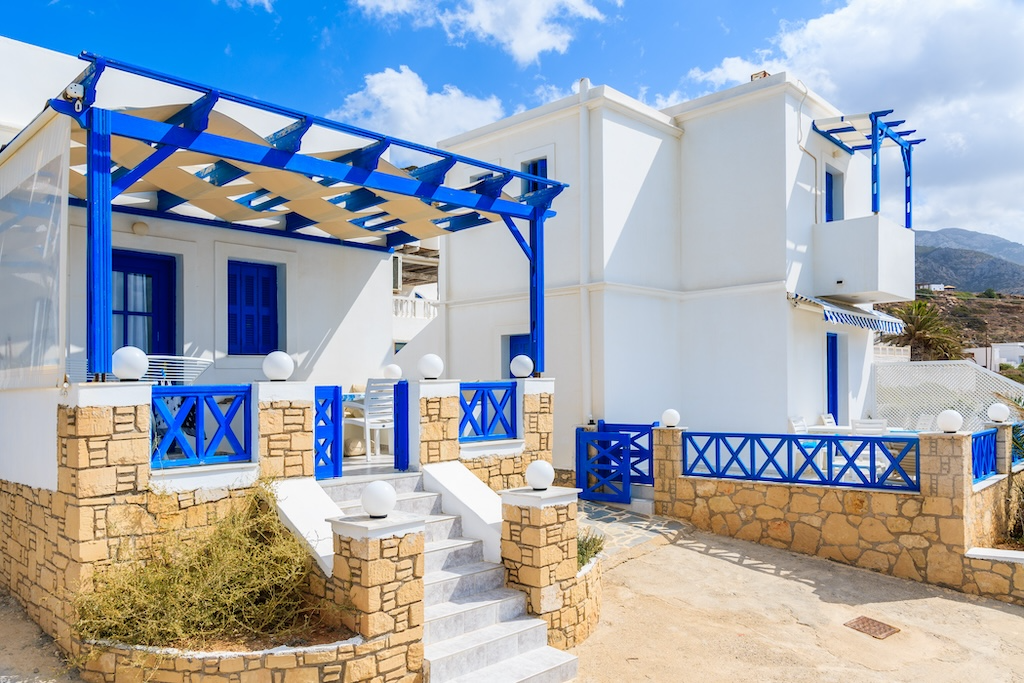House painting transcends mere maintenance; it embodies expression, reflects cultural identity, and animates architectural elements. Diverse regions and cultures across the globe showcase unique house painting styles, echoing their history, climate, and artistic inclinations. This blog explores how global painting trends influence our decorating and living spaces.
Mediterranean Charm
Vibrant and Earthy Tones
House painting in the Mediterranean region features warm, earthy tones like terracotta, ochre, and dusty pink. These colors reflect the natural landscape and aid in keeping homes cool. These hues not only offer aesthetic appeal but also serve a practical purpose in the hot climate, providing harmony with the surroundings and passive cooling benefits to the inhabitants.
Greek Blue and White
The iconic Greek style of bright white walls with blue accents, particularly in the Cyclades, is renowned worldwide. Reflecting the Greek flag, this style creates a contrast symbolic of Greek architecture. The stark white buildings against the vibrant blue backdrop not only create a picturesque scene but also have historical significance. The tradition of whitewashing the buildings dates back centuries and is rooted in cultural practices aimed at reflecting sunlight and repelling insects.
Scandinavian Simplicity
Scandinavian house painting styles are renowned for their simplicity and functionality. They typically feature neutral colors like whites, grays, and pastels, reflecting the minimalistic and clean design aesthetic prevalent in the region. This style emphasizes natural light and simplicity, enhancing the sense of spaciousness and fostering a serene and inviting atmosphere within the home.
Traditional Indian Hues
Indian house painting styles are diverse, but they commonly involve the use of bold, vibrant colors. These colors are not just aesthetic choices but often hold symbolic meanings. For instance, blue is often used in the city of Jodhpur, known as the Blue City, symbolizing the home of Brahmins. In addition to serving as symbols of cultural significance, the vibrant colors used in Indian house painting styles are also believed to ward off evil spirits and bring prosperity to the household. This makes them an integral part of traditional Indian architectural practices and beliefs.
Colonial Elegance in North America
In the US, colonial history influences house painting styles with historical hues. Traditional colors such as sage green, deep reds, and blues are commonly used, giving homes a touch of elegance and historical significance. Additionally, the use of such colors pays homage to the rich history of the region. It also adds a timeless charm to the architecture, preserving the aesthetic integrity of colonial-era homes while blending seamlessly with modern design elements for a distinctive and inviting look.
Japanese Minimalism
Japanese house painting draws heavily from the concept of minimalism and harmony with nature. It commonly features muted, neutral tones like beige, soft greens, and browns. These colors not only contribute to achieving a tranquil and harmonious environment but also reflect a deep appreciation for simplicity and natural beauty. The careful selection of muted tones and natural materials in Japanese house painting aims to create an environment that fosters a deep sense of tranquility and appreciation for the beauty of simplicity.
Vibrant South American Palette
South American house painting reflects cultural vibrancy with bright, bold colors. These vibrant hues not only reflect the warmth and energy of the local culture but also serve to brighten up neighborhoods, infusing them with a sense of joy and vitality. Consequently, they enhance the overall atmosphere of the community, contributing to a lively and welcoming environment.
African Motifs
African house painting styles frequently integrate earthy tones and artistic motifs. Countries like Morocco and South Africa showcase homes adorned with intricate patterns and designs. These elaborate features not only enhance the visual appeal of exteriors but also serve as potent forms of cultural expression. Each pattern often holds profound symbolic significance, deeply rooted in local traditions and beliefs, thereby enriching the architectural landscape of Africa.
Final Thoughts
House painting styles around the world reflect the diversity of the cultures they represent. From the minimalist hues of Scandinavia to the vibrant tones of South America, each style narrates the story of its people, climate, and regional history. These diverse styles not only enhance the beauty of homes but also serve to preserve cultural identities and artistic traditions, contributing to the rich tapestry of global architectural heritage. For more insights into global architectural and painting styles, visit our website at sisupainting.com and explore our blog at sisupainting.com/blog.





No comment